When I took my first Feuerstein Instrumental Enrichment (FIE) course, my instructor challenged me to develop an “elevator speech” that would succinctly explain the Feuerstein program to others. That was good advice, and on many occasions, I have had the opportunity to introduce others to the world of Feuerstein Instrumental Enrichment. In a nutshell, Feuerstein Instrumental Enrichment (FIE) is a cognitive intervention program that enhances the cognitive skills needed for independent thinking, learning, and success in life. FIE can be used one-on-one, in small groups, or in classroom settings, and it is appropriate for learners of all challenges and strengths. It is appropriate for everybody because everybody can learn to learn better.
If I had to sum it up in a single sentence, I would say this: The goal of FIE is to make every learner (which is all of us!) a better learner.
Meet the Professor
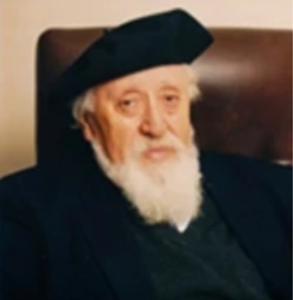 Knowing the professor better helps us to understand his program better, so allow me to introduce you to Reuven Feuerstein, who was born in Romania in 1921. As a young man he studied teaching and psychology before fleeing for his life when the Nazis invaded Romania. He later settled in Palestine in 1945, teaching child survivors of the Holocaust, beginning a long career serving the psychological and educational needs of immigrants, refugees, and other disadvantaged groups. His desire to help the disadvantaged was a driving force throughout his whole life. Eventually, Professor Feuerstein returned to Europe to complete degrees in Psychology, studying under Jean Piaget.
Knowing the professor better helps us to understand his program better, so allow me to introduce you to Reuven Feuerstein, who was born in Romania in 1921. As a young man he studied teaching and psychology before fleeing for his life when the Nazis invaded Romania. He later settled in Palestine in 1945, teaching child survivors of the Holocaust, beginning a long career serving the psychological and educational needs of immigrants, refugees, and other disadvantaged groups. His desire to help the disadvantaged was a driving force throughout his whole life. Eventually, Professor Feuerstein returned to Europe to complete degrees in Psychology, studying under Jean Piaget.
In the 1950s and 1960s, the Professor worked with emigrant populations, discovering that Moroccan Jewish children who did poorly on standard IQ tests did dramatically better when guided through the work with a mediator. This discovery caused the him to question the view that intelligence is fixed. He wondered if cultural differences in learning styles were the real issue, and he began to develop new methods of evaluation and teaching tools (instruments). These instruments capitalized on his developing idea of “cognitive flexibility.”
Over time, Professor Feuerstein developed his theories about low-functioning learners and their potential for change. Through his research, he determined that the key to effective instruction for all children is a “mediated relationship.” Until his death in 2014, Professor Feuerstein used his tools for teaching cognition to those with Down Syndrome, learning disabilities, dementia, stroke, autism, cerebral palsy, traumatic brain injury, and other conditions. The Feuerstein Institute in Israel continues to mediate learners from all over the world while also training educators, therapists, and even parents internationally in the world-renowned Feuerstein Method.
The Theory
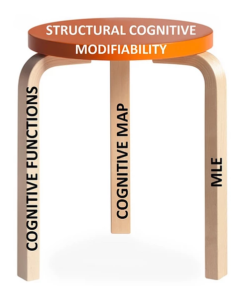 Professor Feuerstein was a man before his time. Long before educators, psychologists, and scientists even began to grapple with the idea of neuroplasticity, Professor Feuerstein began changing the lives of learners and teaching about Structural Cognitive Modifiability (SCM). Essentially, SCM is the ability of the human mind to structurally change. Contrary to his contemporaries, the Professor believed that intelligence is dynamic and modifiable. He considered SCM to be like a three-legged stool, with all three legs necessary for effective and stable structural cognitive modification.
Professor Feuerstein was a man before his time. Long before educators, psychologists, and scientists even began to grapple with the idea of neuroplasticity, Professor Feuerstein began changing the lives of learners and teaching about Structural Cognitive Modifiability (SCM). Essentially, SCM is the ability of the human mind to structurally change. Contrary to his contemporaries, the Professor believed that intelligence is dynamic and modifiable. He considered SCM to be like a three-legged stool, with all three legs necessary for effective and stable structural cognitive modification.
- Cognitive Functions
- Cognitive Map
- MLE – Mediated Learning Experience
Cognitive Functions comprise the first component of SCM. Cognitive Functions are specific thinking actions such as focusing the senses, gathering data carefully, and visualizing, and they are divided into the three phases of the information processing system: input, elaboration, and output. The second component of SCM is the Cognitive Map, which is a model for analyzing any learning task according to its content, learning modality, complexity, and more. The third component of SCM is the Mediated Learning Experience (MLE). This, as NILD educational therapists are aware, is the reciprocal interaction between a learner and an intentional mediator, and the meaning of what is learned in the interaction transcends into other areas of the learner’s life. With all three “legs” firmly in place, the brain can, indeed, be changed.
The Method
Dr. Kathy Hopkins introduced the Feuerstein Method to NILD many years ago.
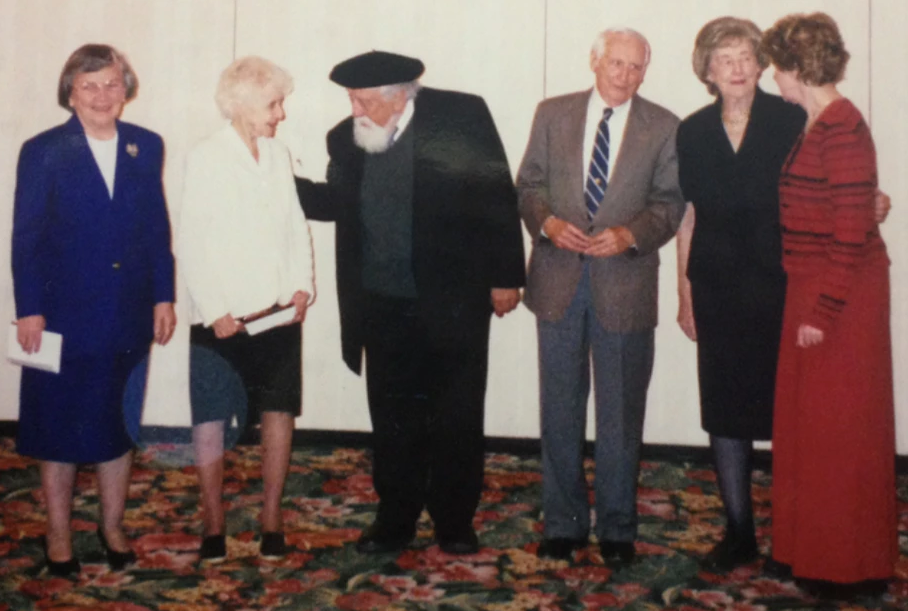
Grace Mutzabaugh, Deborah Zimmerman, Professor Feuerstein, Dr. Archie Silver, Dr. Rosa Hagin, & Dr. Kathy Hopkins
Dr. Hopkins and the amazing Jenny Jenson, who has Down Syndrome, traveled to Israel to work with Professor Feuerstein.
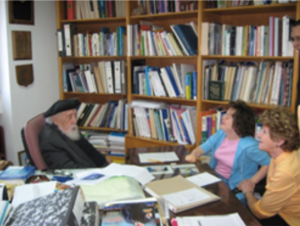 Dr. Hopkins observed, first hand, the master at work as he mediated Jenny through some of his learning instruments. Fortunately for the rest of us, Dr. Hopkins brought those tools back to NILD where other NILD educational therapists are able to train in the use of FIE and increase the impact of our work in the lives of learners around the world.
Dr. Hopkins observed, first hand, the master at work as he mediated Jenny through some of his learning instruments. Fortunately for the rest of us, Dr. Hopkins brought those tools back to NILD where other NILD educational therapists are able to train in the use of FIE and increase the impact of our work in the lives of learners around the world.
The Feuerstein program includes several components, and each component takes an active approach to learning and development. Each part increases motivation, develops metacognition, and helps the student learn how to learn more efficiently.
- Basic
- Standard
- Tactile/Kinesthetic
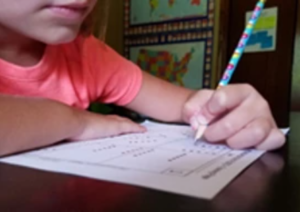 Basic is considered most appropriate for younger populations (3 – 8 years old), but it actually has applications for older learners as well. It is useful for remediation, prevention of dysfunction, and/or acceleration of a more “typical” learner’s skills. The instruments in FIE-Basic offer a unique emphasis on developing emotional skills and include:
Basic is considered most appropriate for younger populations (3 – 8 years old), but it actually has applications for older learners as well. It is useful for remediation, prevention of dysfunction, and/or acceleration of a more “typical” learner’s skills. The instruments in FIE-Basic offer a unique emphasis on developing emotional skills and include:
- Organization of Dots
- Identifying Emotions
- From Empathy to Action
- Compare and Discover the Absurd A & B
- Tri-Channel Attentional Learning
- Orientation in Space
- Thinking to Learn to Prevent Violence
- Learning to Question for Reading Comprehension
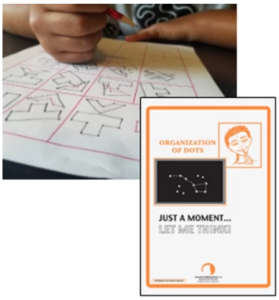 Standard program instruments are highly interconnected, whereas other thinking skills programs tend to be episodic, teaching unrelated skills. Generally, FIE-Standard is geared toward 3rd grade through adult learners and includes the following instruments:
Standard program instruments are highly interconnected, whereas other thinking skills programs tend to be episodic, teaching unrelated skills. Generally, FIE-Standard is geared toward 3rd grade through adult learners and includes the following instruments:
- Organization of Dots – Watch a short video (below) of Kathy and Jenny working on a Dots page
- Orientation in Space 1
- Comparisons
- Analytic Perception
- Categorization
- Illustrations
- Family Relations
- Temporal Relations
- Instructions
- Orientation in Space 2
- Numerical Progressions
- Transitive Relations
- Syllogisms
- Representational Stencil Designs
Tactile-Kinesthetic is a unique program that requires the learner to wear a blindfold during mediation. When the sense of sight is removed, the learner is forced to focus the other senses on the learning experience. T/K has powerful applications for all ages and levels of learners, especially those with ADHD and visualization difficulties, and also those suffering with PTSD, dementia, and more.
Appropriate Populations
Feuerstein Instrumental Enrichment is effective for all kinds of learners:
- Learning Disabilities
- Low IQ
- ADHD
- High IQ/Gifted
- Developmental Disabilities
- Visually-Impaired
- Autism Spectrum Disorder
- Hearing-Impaired
- Brain Injury
- Dementia
- Down Syndrome
- Stroke Victims
- Mental Retardation
- ANY TYPE OF LEARNER
Keep in mind that while FIE can improve the learning of all types of “special needs” learners, it is not limited to special needs learners. Professor Feuerstein maintained that ALL learners can learn to learn better – even those who are already successful at learning! That’s great news for all of us! Who doesn’t want to learn better? I know I do!
Who Should Get Trained as an FIE Mediator?
FIE training is appropriate for educational therapists, teachers, psychologists, support staff, and counselors. In fact, in my years of Feuerstein training, I have met professionals and parents from all walks of life. In addition to the professions listed above, I have trained with speech pathologists, engineers, prison system staff, professors, entrepreneurs, clergy of various faiths, school administrators, and parents of learners with and without special needs. Frankly, I don’t think there is a person alive who wouldn’t benefit from Feuerstein Instrumental Enrichment. For me, as an NILD educational therapist, I can tell you that Feuerstein training has made a profound impact on my life, professionally and personally.
When giving that elevator speech I previously mentioned, I always end with something like this: Feuerstein training makes everyone who takes the training a better person. You think better. You relate better. You cope better. You attend better. You organize better. You cooperate better. You problem-solve better. You plan better. You really do become a better person – you simply can’t avoid it!
Today’s guest blog post was written by Lorri Wilke. This post originally appeared on Kristin Barbour’s website.

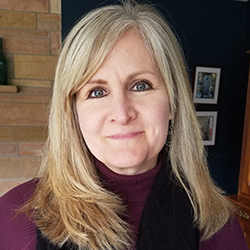
Thank you for this amazing collection of facts.
I have learnt to be able to become a better learner and a better person.
I want to get the therapy. I have memory issues.